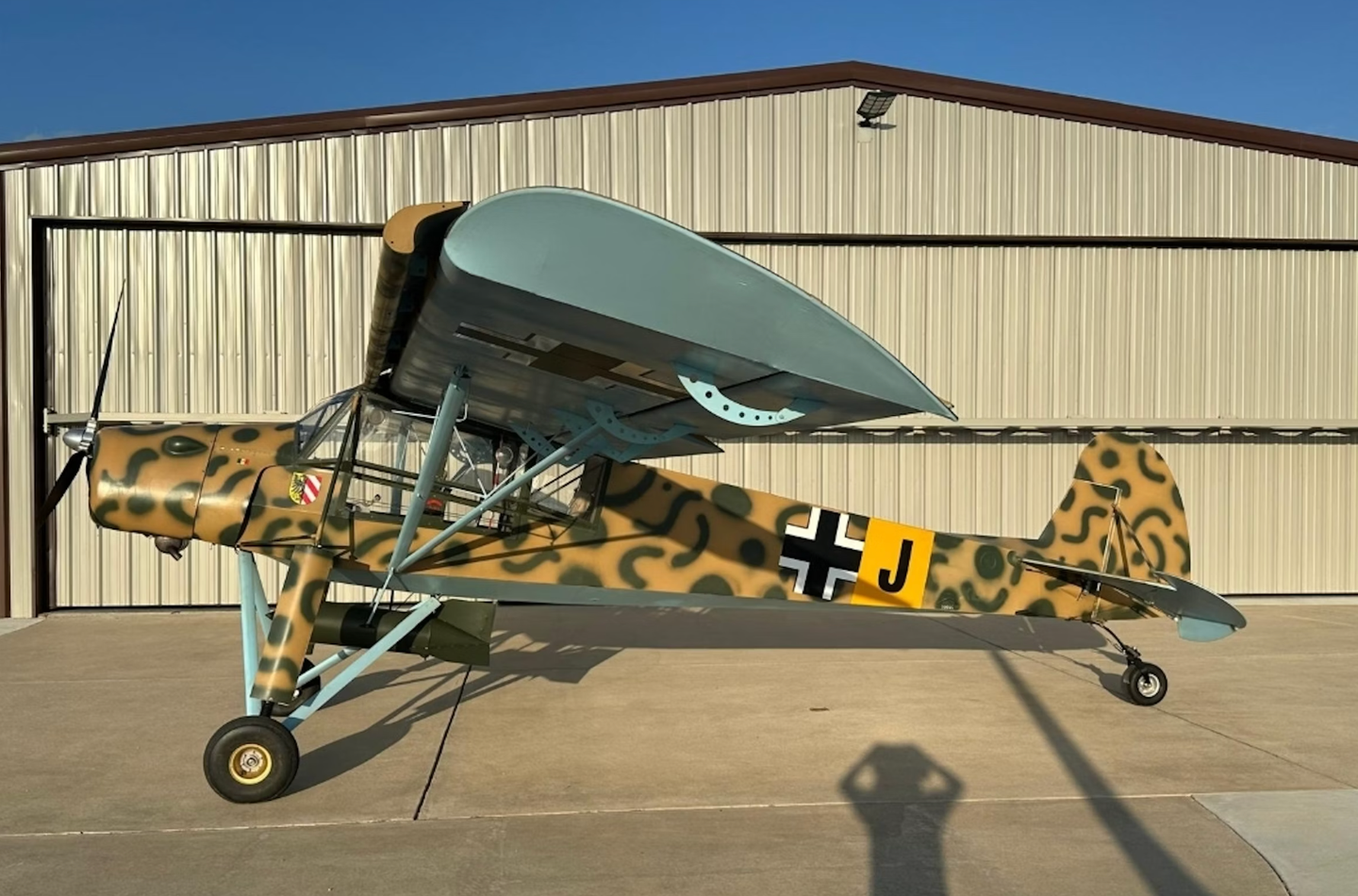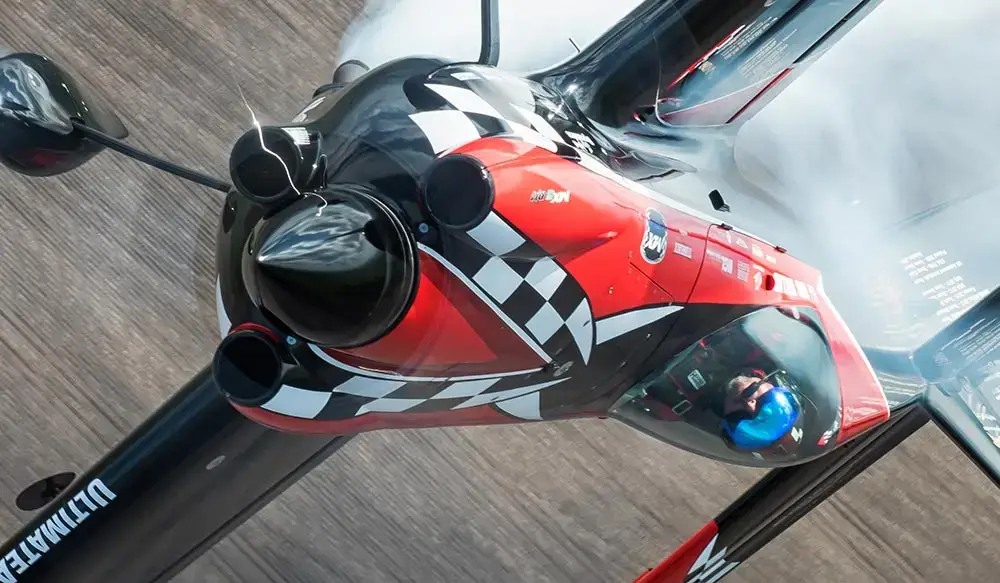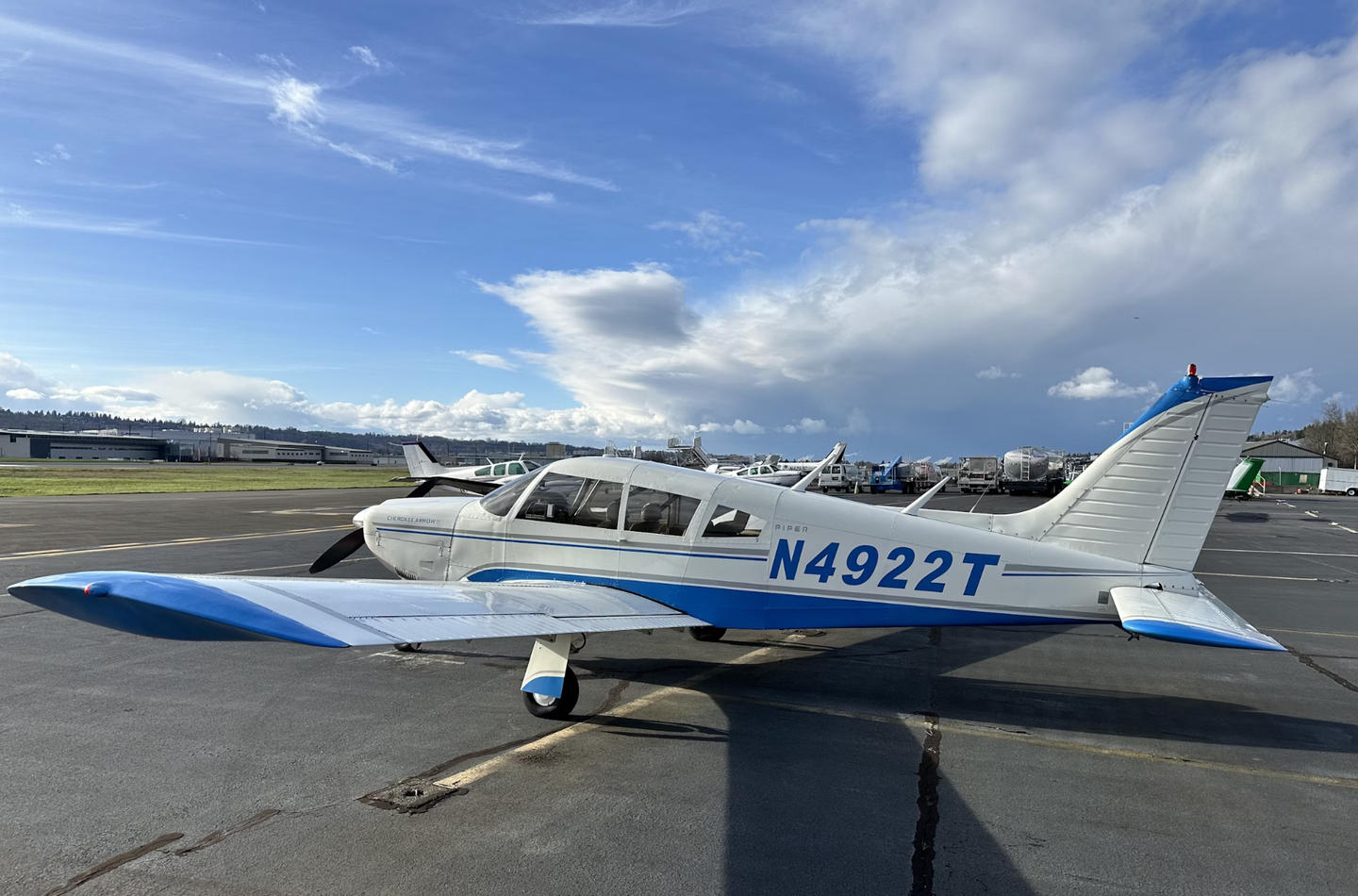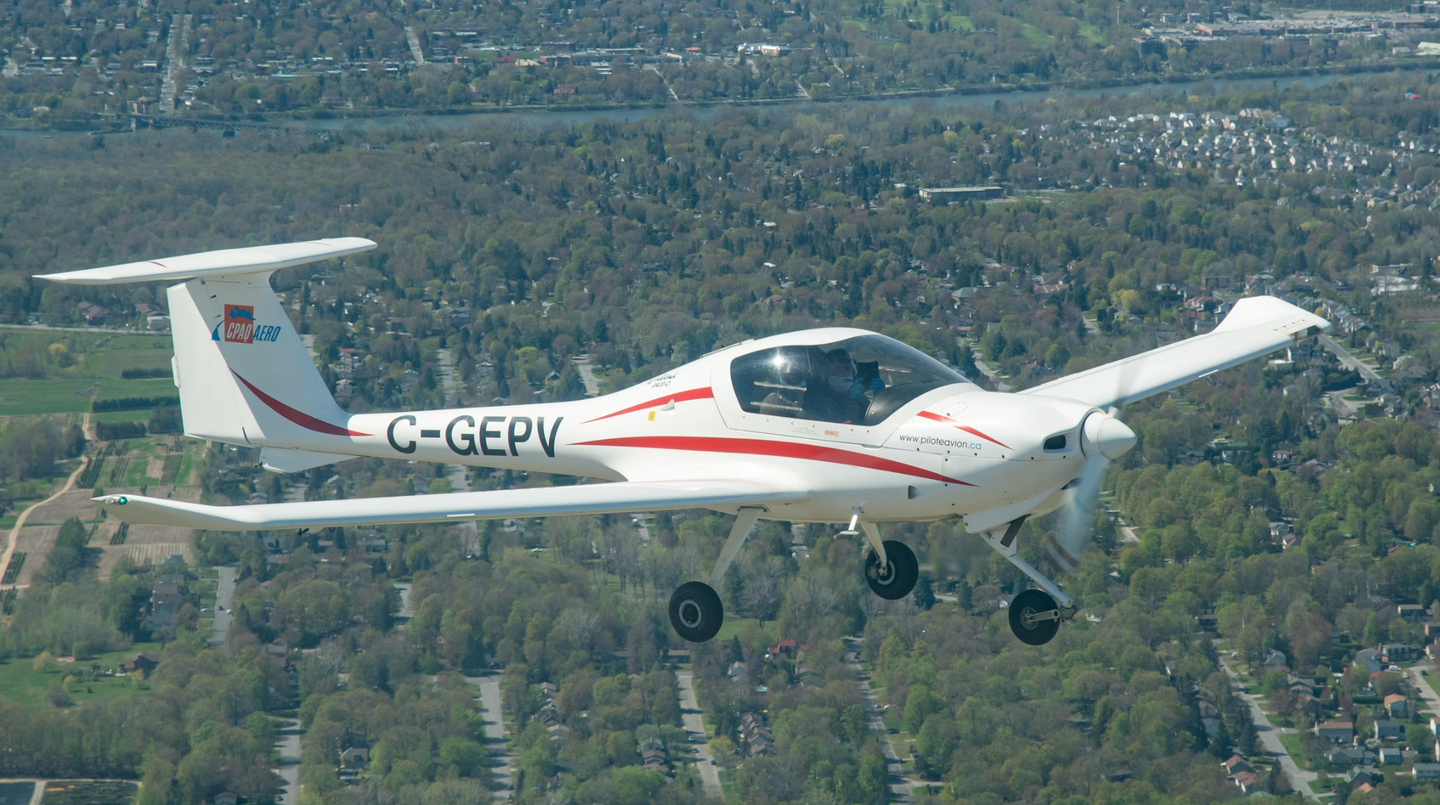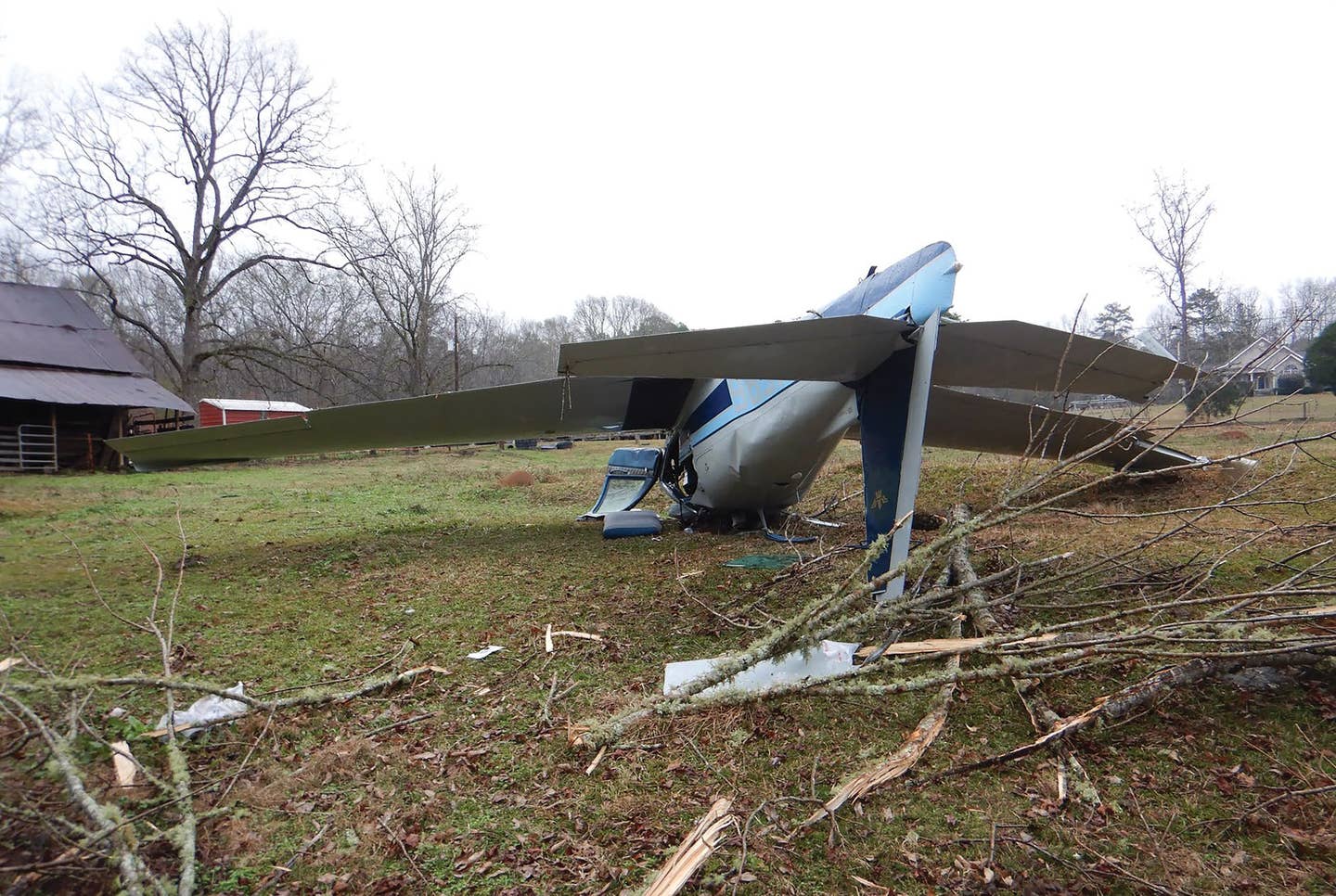White-Knuckle Affair
Delivering a former Civil Air Patrol Piper J-4 Cub provides a journey back in time.
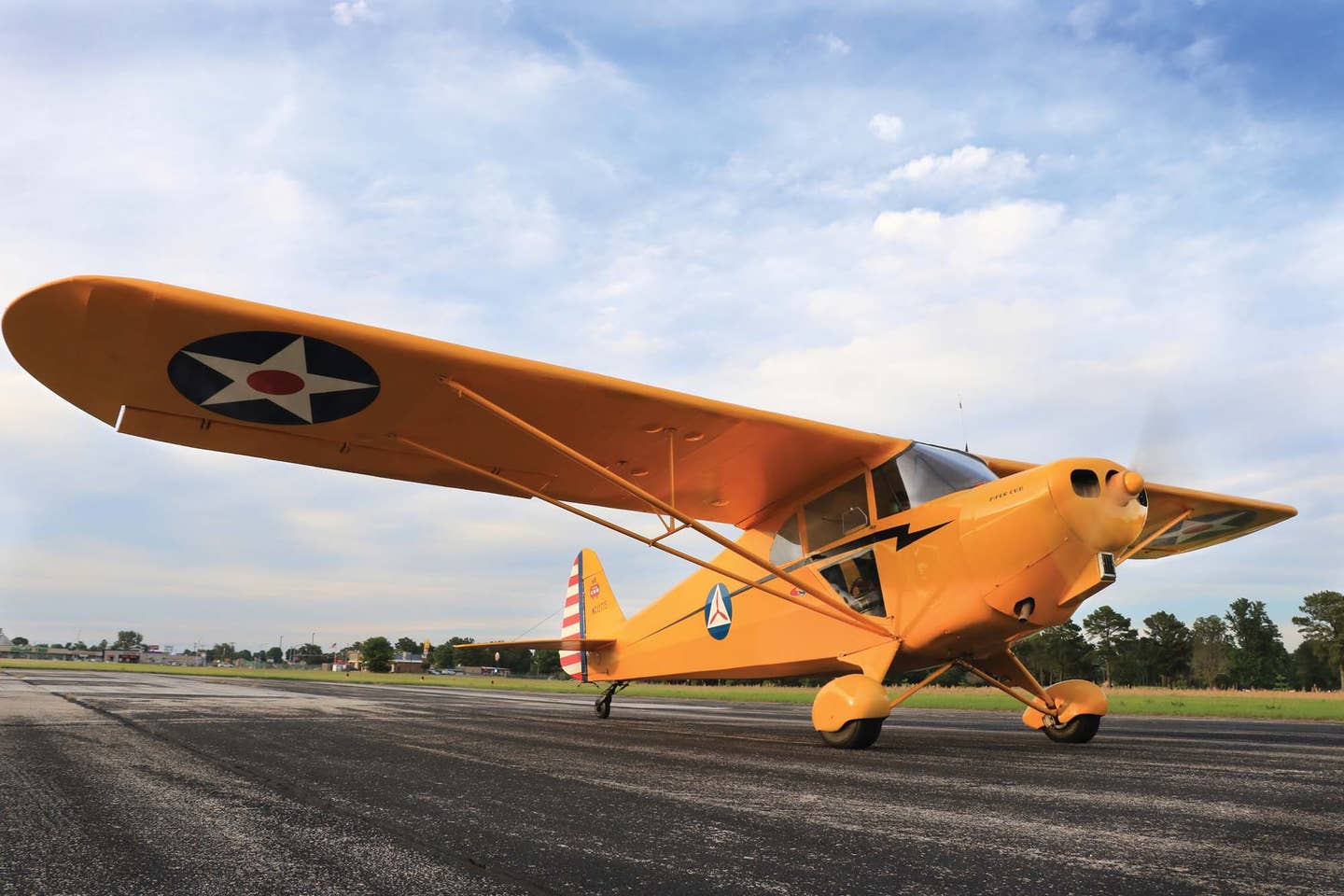
The windsock whipped back and forth above us as we completed the external preflight and checked the cowl fasteners one last time. Climbing into the bright yellow 1940 Piper J-4 Cub, one of my longtime flying friends, David Wilkins, and I fastened our seat belts and purposely made our way down the preignition checklist. With the “before start” list out of the way, we continued through the “engine start” portion, then inched forward to check the heel brakes and flight controls before moving on to the run-up.
The weather briefing we had reviewed a half hour earlier promised a 20-knot headwind that would require two fuel stops on the 130-mile trip from our home airport in Kennett, Missouri (KTKX), to Little Rock Air Force Base (KLRF) in Arkansas. The windsock promised that getting the little yellow bird into the air would be a white-knuckle affair. We knew the flight would be anything but smooth.
Twenty minutes into the flight, he called, ‘Your plane,’ and I gripped the stick…
The J-4 differs from its more recognizable cousin, the J-3, in that it features side-by-side seating instead of the tandem arrangement more commonly found in tailwheel aircraft from the prewar and postwar era. It went through several variations between 1938 and 1942 before the attack on Pearl Harbor brought to an end any future iteration. The J-4’s cockpit is wider than the more common J-3, and the second generation brought about the replacement of the open cowl with exposed exhaust ports with a fully enclosed cowl.
I watched the stick flutter to and fro in sync with the rudder pedals as Wilkins fought to maintain the centerline, all the while pushing in the throttle. The little plane leapt into the air almost immediately as the wind seemingly swirled from every direction along the 5,000-foot runway. Wilkins guided the craft along the invisible roller coaster, working to keep the wings level while maintaining a crab as the Cub climbed the first 500 feet. Once there, he put us in a slight right turn toward our first fuel stop 60 miles ahead, continuously fighting the stick as the gusting left crosswind did its best to push us off course.
Twenty minutes into the flight, he called, “Your plane,” and I gripped the stick, doing my best to maintain 2,500 feet, where we had found just a slight respite. The sun had already reached its apex, creating invisible waves of air as the flat farmland of southeast Missouri gave way to the forested hills of northeast Arkansas. We were delivering the J-4 to Little Rock, where it would be on static display throughout the weekend at Thunder Over the Rock, an airshow that had been dormant since the COVID-19 pandemic three years prior.
In its early life during World War II, NC32775 had served as an industrial courier with the Civil Air Patrol at Reading Courier Station in Pennsylvania and was owned by Frances Nolde, who would go on to become station commander and one of the first female colonels in CAP. Nolde, the wife of wealthy hosiery manufacturer Hans Nolde, was fascinated with flying and set out to earn her certificate with her husband’s encouragement. She was completely seduced by aviation, and when the U.S. entered WWII, Nolde joined the CAP, ferrying cargo and personnel around the country. Efforts like this freed male pilots for combat missions, and her dedication led to her appointment as commander of Reading Station. After the war, she remained active with the group and was promoted to the rank of colonel, having logged some 4,500 hours of flying for CAP.
It was because of this CAP history that the plane we were now flying had been invited to participate in the airshow where it would share ramp space with more modern glass panel Cessna 172s and 182s operated by the Air Force’s civilian auxiliary. Wilkins, a captain in the Civil Air Patrol, had shared photos and history of NC32775 with Lieutenant Colonel Marchelle Jones, who immediately began making preparations for the J-4’s appearance at the upcoming event.
The discovery of the aircraft’s pedigree almost did not happen. The J-4, also known as a Cub Coupe, had been dropped off in Kennett for annual in 2008 by its then-owner and ended up becoming a permanent resident when Hurricane Ike stretched inland all the way to the Missouri Bootheel, lifting it from the ground and depositing it on top of the FBO’s maintenance hangar. Airport manager Sam Jewell agreed to purchase the damaged plane and set about fully restoring it. Both wing’s spars had been damaged, requiring them to be stripped down to the skeleton for repair. Fabric on the fuselage also had to be replaced. (In more recent years, the original 65 hp engine had been replaced by a Continental 85 hp engine with Stroker conversion that provides 100 hp, and an electrical system had been added to eliminate the need to hand-prop.)
By the time it was ready for the paint shop, its previous CAP lineage had been discovered, and the CAP livery was affixed to the fabric body, but little else was known about its service in WWII. That is, until Colonel Frank Blazich, former CAP national historian, discovered it was the same aircraft flown by Nolde. In his book, An Honorable Place in American Airpower, Blazich chronicles the legacy of the Civil Air Patrol and how the use of civilian aircraft in the war effort was the first step in the organization becoming a vital component of the country’s air power.
Arranging for the delivery of civilian aircraft to a military airbase takes considerable time, but that would not stop Jones, who cut through the layers of red tape with the efficiency of someone familiar with the inner mechanisms of bureaucracy. Further complicating matters was the fact that the plane would be delivered by civilian pilots. Wilkins’ service with CAP proved valuable in that he would not have to provide anything other than his credentials. His copilot (me) had to be properly cleared before the Air Force granted permission for a nonmilitary pilot to land at a military installation.
Nearly an hour and a half after takeoff, having traveled only 60 nm, I turned the controls back over to Wilkins as we plodded through the prelanding checklist for our first fuel stop in Newport, Arkansas (M19). The plane has no internal radio, so cockpit and external communications were running through a portable intercom plugged into a portable radio. The single push-to-talk button had been mounted onto my control stick so that I could handle communications while Wilkins focused on landing the tailwheel plane in the expected gusty crosswinds.
Hearing no other traffic in the area, Wilkins opted for a relatively straight-in approach to Runway 22, once again dancing on the rudder pedals and wrestling the ailerons as the gusty winds threatened to shove us off the pavement. Knowing that even a favorable forecast could change quickly, Wilkins had spent several weeks preparing for the worst, practicing takeoffs and landings at our home airport on days when most pilots in more modern aircraft chose to stay on the ground. The landing was uneventful, and we were soon taking on fuel for the second leg of the journey.
I announced our departure intentions, receiving well wishes from the airport attendant who had come out to admire the plane, and Wilkins once again pointed us down the runway and into the blue sky. Such would be our routine for the next three hours. Wilkins would handle takeoff and landing duties, and I would, thankfully, only handle cruise.
The remainder of our flight would follow U.S. Highway 67, a four-lane divided route boasting a 75 mph speed limit. We joked as we watched the traffic below zoom past us, wondering whether we might actually be moving backward. With an average cruise speed of 70 mph while sipping 5 gph, the Cub was barely making 50 across the ground as it struggled against the headwind. Due to our limited speed and the fact that we had an assigned 15-minute window in which to land at the Air Force base, we made plans to make one final fuel stop at Searcy, Arkansas (KSRC), which was only 30 miles from the airbase.
Once again, Wilkins mastered the landing, ballooning once before settling down on Runway 19 and taxiing to the fuel pumps. We took a much-needed 20-minute rest and then briefed the final leg. Our plan was to fly to the eastern edge of the restricted airspace surrounding the airshow center and hold until contacted by the tower. Knowing a B-52 was scheduled to land behind us, we were abundantly aware of the need to precisely time our arrival.
As the sun began its descent, we began the final leg of what would end up being a four-hour trek. The afternoon turbulence had subsided a bit, making it easier to maintain a holding pattern over the town of Cabot, located 6 miles from the approach end of Runway 25. We notified the tower of our location, mainly for the benefit of the two F-35s practicing maneuvers nearby, conscious of the fact that we would never be able to avoid them—and that they would never see us—if they did come our way. Without a transponder, we were hiding in plain sight, all other aircraft oblivious to our presence, a sobering fact that became all too apparent when we noticed the KC-135 passing 3 miles in front of us as we circled counterclockwise around the town.
Just before our appointed entry time, a privately owned performance jet somehow missed the approach to the 12,000-foot-long runway and then declared a low-fuel emergency. We were asked to hold our position a few more minutes before finally being cleared to begin our approach after the jet made a successful landing on the second attempt. Not knowing the B-52 had arrived ahead of schedule, the four minutes that passed during the 5-mile final seemed like an hour, and when the mains touched down just inside the threshold, we both let out a sigh of relief. It was only after exiting the runway that we noticed the B-52 ahead of us awaiting its own taxi instructions.
Finally, after being marshaled to parking and completing the shutdown checklist, we exited the aircraft for the last time that day with big smiles and a high-five, euphorically congratulating each other on completing the exhausting mission.
Throughout the weekend, the little canary-yellow airplane with a wooden propeller proudly posed for photos with old and young admirers alike, her much younger and far more advanced siblings in the background. Little girls, especially, were enamored with the aircraft after hearing Jones tell stories and show photos of the woman pilot who flew it in WWII.
The monstrous cargo planes and nimble fighter jets soaring overhead could no doubt travel faster, but only the little Cub could offer a journey back in time.
Images By Gary Figgins.

Subscribe to Our Newsletter
Get the latest Plane & Pilot Magazine stories delivered directly to your inbox


